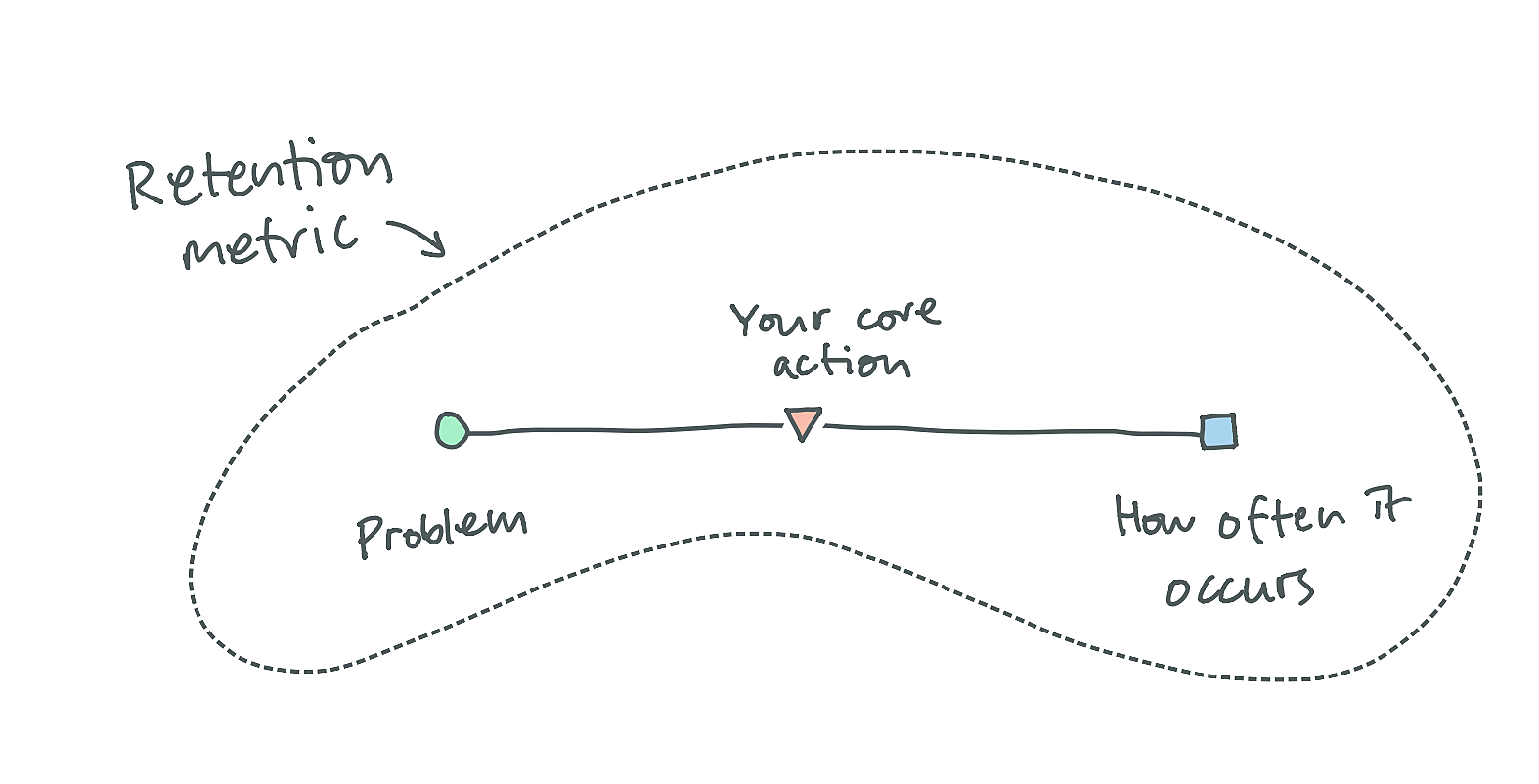
Just because someone's using your product doesn't mean you're solving their problem. They might be using it more than usual precisely because it's not solving the problem the way they need it to.
A clear understanding of your problem comes from listening to how your users think and talk about it. Finding the right level of abstraction is key here.
Once you have your problem scoped, then you need to figure out how often it occurs. If you help people file taxes once a year, there's nothing you can track each month to tell you if they successfully filed their taxes that year.
Next is the core action people need to take to deal with the problem. Maybe I think of your product as something the helps me schedule posts, in which case scheduling posts is all I need to track. If I think you're helping me monetise my writing, 'posts scheduled' might not cut it. This is where the right level of abstraction comes into play.
A well-scoped problem, understanding how often it occurs, and your core action all combine to shape your retention metric. A good metric will show you if people are successfully using your product to solve their problem.
Hey, I’m Josh 👋 I help product development teams understand, measure and improve user retention. I also have a free guide on how to do this all yourself 👉 joshpitzalis.com